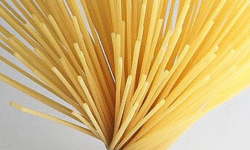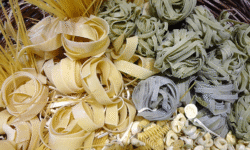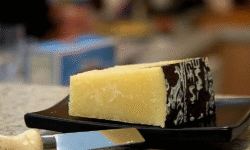Italy 🇮🇹
Country in Europe
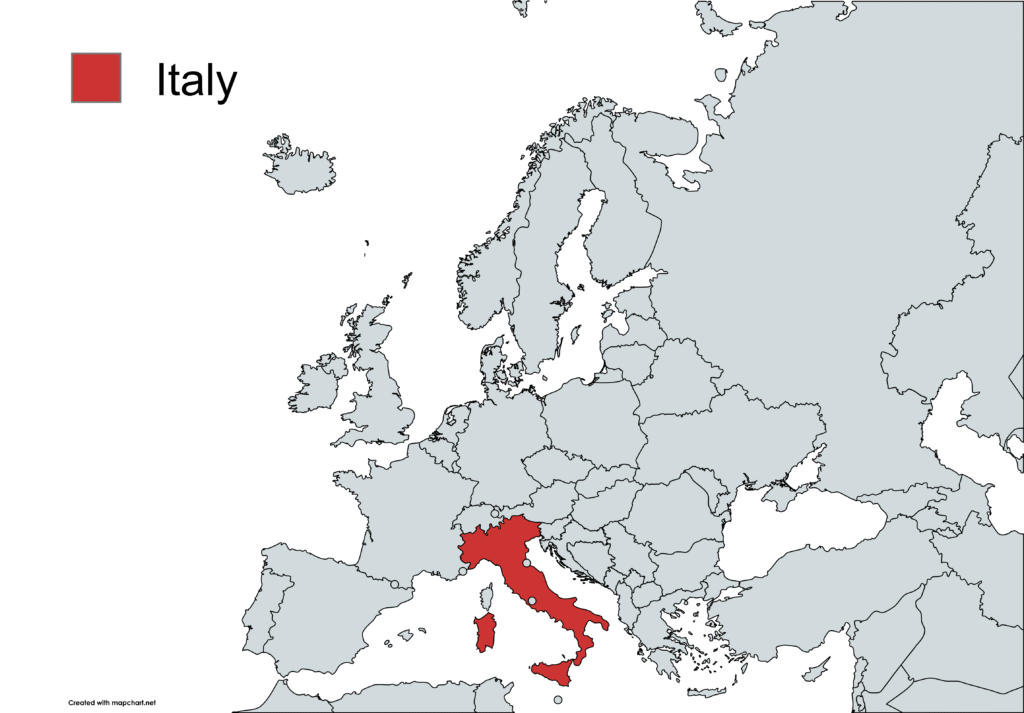
Introduction
Italy, officially the Italian Republic, is a country in Southern and Western Europe that occupies a long peninsula extending into the Mediterranean Sea, along with nearly 800 islands including Sicily and Sardinia. Bordered by the Alps, it shares frontiers with France, Switzerland, Austria, Slovenia, and the enclaves of San Marino and Vatican City. Its capital is Rome, while other major cities include Milan, Naples, Florence, and Venice. Known for its central role in the Roman Empire, the Catholic Church, and the Renaissance, Italy remains a leading country in art, culture, fashion, and design, and holds the world’s highest number of UNESCO World Heritage Sites.
| Official name | Repubblica Italiana (Italian Republic) |
| Capital | Rome |
| Government | Unitary parliamentary republic |
| Area (km² / sq mi) | 301,340 / 116,350 |
| Population | 58,947,905 (2024) |
| Official language(s) | Italian |
| Demonym(s) | Italian |
| Currency | Euro (€) |
| Anthem | “Il Canto degli Italiani” |
| Flag | 🇮🇹 |
| Flag meaning | The Italian flag, known as the Tricolore, consists of three vertical bands of green, white, and red, symbolizing the country’s values: green for hope, white for faith, and red for love (or charity). |
History of Italy
Archaeological finds in Italy trace human presence back hundreds of thousands of years. At Monte Poggiolo, tools made by early humans, estimated to be about 850,000 years old, were uncovered. Evidence of Neanderthal activity appears across the country, dated to around 200,000 years ago, while modern humans emerged about 40,000 years ago at Riparo Mochi. These inhabitants were followed by various Italic peoples, part of the Indo-European family, alongside groups of probable older origin like the Etruscans, Sicani, and prehistoric Sardinians, known for the Nuragic civilisation.
Early foreign settlers included the Phoenicians, who created trading posts in Sicily and Sardinia. In the 8th and 7th centuries BC, Greek colonists founded cities such as Pithecusae, contributing to the rise of Magna Graecia. These settlements brought contact with democratic systems and refined culture. Around this time, Rome—founded in 753 BC—began as a monarchy, but by 509 BC transitioned into a republic led by the Senate and people. Over time, it expanded across the Italian Peninsula, conquering the Etruscans, Celts, and Greek colonies, and later building a vast Mediterranean empire.
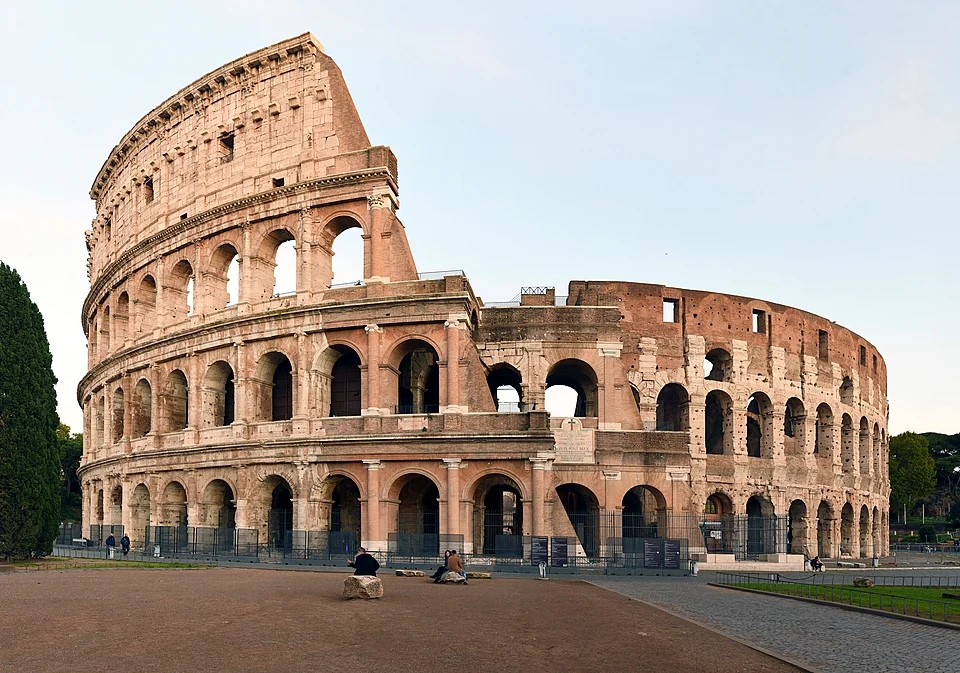
With the Western Roman Empire’s fall, Italy entered a period of instability. The region saw successive rulers: Odoacer, the Ostrogoths, and then the Lombards, who diminished Byzantine control. The north formed a Lombard Kingdom, while the Franks helped shape the Papal States. Northern city-states gained autonomy, founding systems of commerce and banking. Maritime republics like Venice and Genoa dominated Mediterranean trade. These cities supported the Crusades, funded exploration like Marco Polo’s journey, and became centers of artistic and intellectual growth. In the south, Arab Sicily thrived until the Norman conquest, but the Black Death in 1348 decimated the population.
From the 15th to 18th centuries, Italy was the birthplace of the Renaissance, a cultural rebirth fueled by wealthy merchant cities and influential families like the Medici. These city-states operated as autonomous regions ruled by powerful dynasties whose courts nurtured arts and humanism. The fall of Constantinople pushed Greek scholars westward, enriching Italian knowledge and culture. Artists such as Leonardo da Vinci and Michelangelo shaped European art, while explorers including Columbus and Vespucci launched the Age of Discovery. Despite alliances like the Italic League, Italy faced foreign invasions starting with France in the late 1400s, leading to wars and partial Spanish domination by the mid-1500s.
In the 19th century, a strong nationalist movement called the Risorgimento pushed for Italian unification after centuries of foreign rule and division. Leaders like Giuseppe Mazzini and Giuseppe Garibaldi inspired revolutionary efforts, while the monarchy under the House of Savoy and prime minister Cavour sought diplomatic and military means to unify the peninsula. Through wars against Austria and internal campaigns, Italy was gradually united by 1870, with Rome as the capital. The new kingdom was a constitutional monarchy struggling to modernize, with growing industrialization in the north and widespread poverty in the south, prompting mass migration.
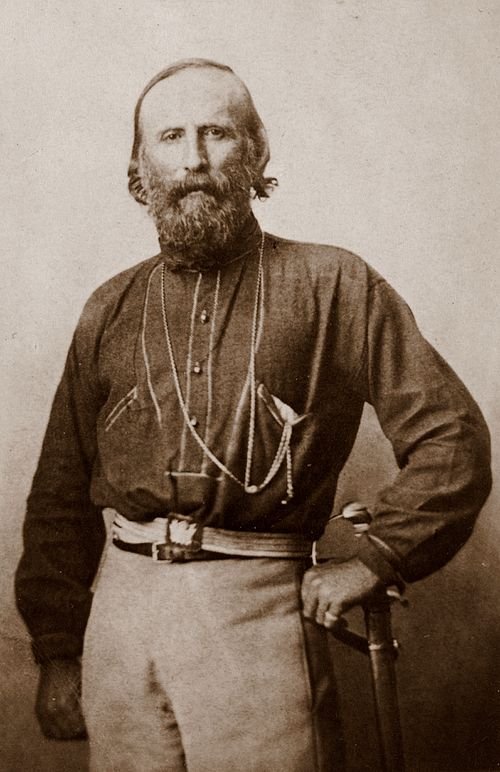
The 20th century saw Italy grappling with political upheaval, including the rise of fascism under Mussolini, who allied with Nazi Germany during World War II. After the war, Italy abolished the monarchy and became a republic in 1946, entering NATO and the European community. The country experienced rapid economic growth post-war but faced terrorism and social unrest in the 1970s. Recent decades brought political instability, migration challenges, and the impact of the COVID-19 pandemic.
Geography of Italy
Italy, situated in Southern Europe and sometimes considered part of Western Europe, spans latitudes 35° to 47° north and longitudes 6° to 19° east. It shares its northern borders with France, Switzerland, Austria, and Slovenia, mainly defined by the Alps, which enclose fertile areas like the Po Valley and Venetian Plain. The country comprises the entire Italian Peninsula, along with the large Mediterranean islands of Sicily and Sardinia, plus numerous smaller islands, some extending beyond the main continental shelf. Additionally, enclaves like San Marino and Vatican City exist entirely within Italy, while Campione d’Italia is an Italian territory surrounded by Switzerland.
Covering about 301,230 square kilometers, Italy’s landscape includes roughly 35% mountainous terrain, dominated by the Apennines running along the peninsula and the Alps in the north. The highest peak in the European Union, Mont Blanc, rises to 4,810 meters. Italy is also known for volcanic features, with active volcanoes like Mount Etna, Vesuvius, Stromboli, and Vulcano mostly located on its southern islands. The country’s rivers generally flow into the Adriatic or Tyrrhenian Seas, with the Po River being the longest and crossing the expansive Po Valley, Italy’s largest lowland area.
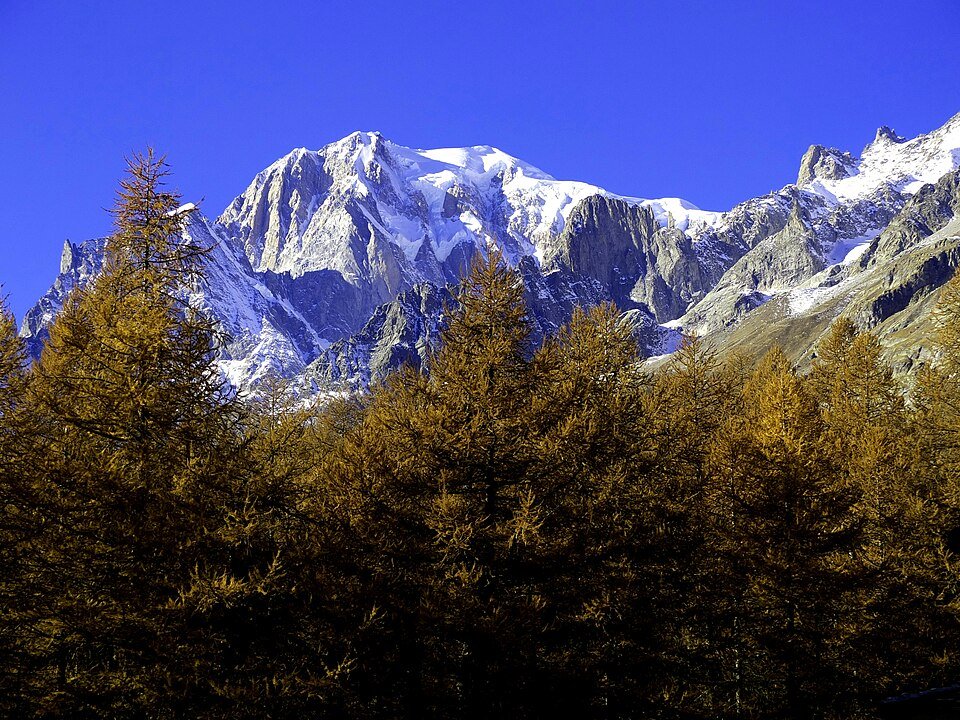
Italy’s climate varies due to its geography and surrounding seas, which moderate temperatures along coasts but leave inland and high-altitude regions colder. Coastal areas experience mild winters and hot, dry summers typical of the Mediterranean climate, while northern plains like the Po Valley show humid subtropical characteristics. Winters can bring snow and fog in the mountains and north, whereas summers tend to be hot nationwide except at higher elevations. Thunderstorms are common in the central and northern parts from spring through autumn, reflecting the diverse meteorological patterns across the country.
Rich in biodiversity, Italy’s diverse habitats—from the Alps and Apennines to Mediterranean scrublands—support one of Europe’s highest numbers of animal and plant species. The country hosts thousands of fauna species, including many endemic ones such as the Italian wolf, which holds symbolic national importance. Italy’s flora boasts thousands of vascular plants, with numerous endemics, and it maintains a tradition of formal gardens influenced by Renaissance ideals of symmetry and order. Environmentally, Italy has made strides in sustainability with significant protected areas and renewable energy use, though challenges remain like air pollution in industrial regions and ecological damage caused by erosion and natural disasters.
Culture of Italy
Italy has been a major force in shaping Western culture, thanks to its diverse regional traditions and historic centers of artistic innovation. From ancient Roman engineering—arches, domes, basilicas—to the revolutionary forms of Renaissance architecture, Italy defined major styles like Palladianism, which later spread across Europe and the US. Key figures like Brunelleschi, Bramante, and Palladio pushed architectural design to new heights. Later movements such as Baroque, Neoclassicism, and even Fascist-era styles like the Novecento continued this legacy. Italian painting followed a similar arc: from ancient Roman murals to the dramatic innovations of Renaissance masters like Michelangelo and Leonardo da Vinci, and on through Baroque, Rococo, and Futurism, Italy consistently redefined visual storytelling and technique.
Italian literature traces back to early Latin writers like Virgil and Ovid, evolving into the medieval brilliance of Dante, who helped form the modern Italian language. The Renaissance brought works by Petrarch, Boccaccio, and Machiavelli, whose writings shaped poetry, fiction, and political thought. In later centuries, Romantic and realist authors like Manzoni and Salgari merged national identity with literary form. The 20th century introduced Futurism, the avant-garde movement of Marinetti, and global names like Calvino, Pirandello, and Eco. In philosophy, Italy contributed from ancient times through Aquinas, Bruno, Beccaria, and Gramsci, influencing religion, science, politics, and education—especially through figures like Maria Montessori, whose ideas remain influential worldwide.
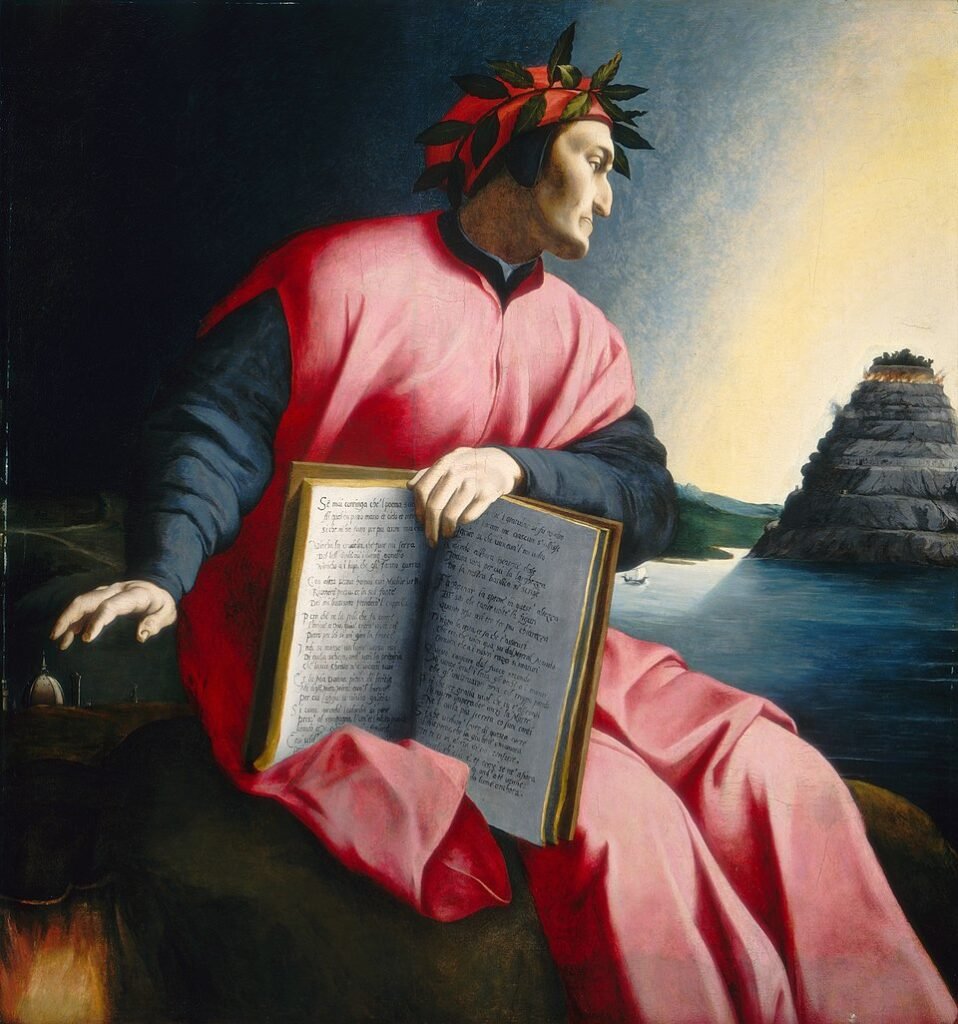
Italian theatre began in the Middle Ages, drawing from Catholic rituals and pagan celebrations. With the Renaissance, it evolved into modern theatre through revived classical works and public performances. The 16th century saw the rise of commedia dell’arte, a form of improvised comedy with fixed stock characters and physical humor. These shows used basic scripts called lazzi and featured the first female actresses in Europe since antiquity. Italy also pioneered ballet, born from courtly pageants.
Italy’s influence on music is equally profound. The violin and piano, key to classical music, were invented here, along with forms like the symphony, sonata, and concerto. Composers such as Vivaldi, Verdi, and Puccini defined entire musical eras. Italy also gave birth to opera, a genre it still dominates. In the 20th century, Italy embraced jazz, rock, and electronic music, shaping styles like Italo disco. Artists like Giorgio Moroder and Jovanotti expanded Italy’s sound globally. The Sanremo Festival launched careers and inspired Eurovision, won by Italians including Måneskin. From classical to pop, Italy remains a powerhouse of musical innovation.
Cuisine of Italy
Italian cuisine is a melting pot of various influences, including Etruscan, Greek, Roman, Byzantine, Arabic, and Jewish culinary traditions. The discovery of the New World brought potatoes, tomatoes, and maize into the Italian pantry, forever changing the landscape of the cuisine from the 18th century onward. The core of Italian cooking is based on the Mediterranean diet, which emphasizes pasta, fish, fruits, and vegetables, all prepared with simplicity and a focus on quality. Each region in Italy boasts its own signature dishes, such as lasagna from Emilia-Romagna, risotto alla milanese from Lombardy, and arancini from Sicily, showcasing the rich regional diversity that defines the country’s food culture.
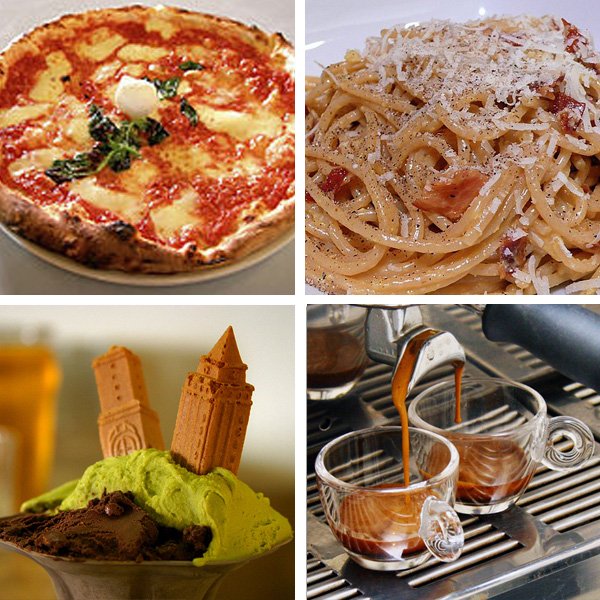
In Italy, traditional ingredients are not just a culinary preference, but an essential part of the nation’s gastronomic heritage. A large number of Italian products hold EU protection, with many receiving PDO (Protected Designation of Origin) or PGI (Protected Geographical Indication) status. For example, the iconic Parmigiano Reggiano and Mozzarella di Bufala are highly protected. Italian food is also known for its cheese, cold cuts, and wine, with each region offering distinct specialties. Pizza from Naples and Carbonara from Rome are just two examples of internationally loved dishes that reflect Italy’s rich culinary traditions. Moreover, the nation’s dessert repertoire, from Tiramisu to Cassata, blends local flavors like pistachio, almonds, and citrus fruits with sweet cheeses such as ricotta and mascarpone.
The structure of an Italian meal follows the Mediterranean rhythm, consisting of breakfast, lunch, and dinner, although breakfast is typically lighter than in many Western countries. In addition to the main meals, Italians often indulge in merenda, a light snack in the late morning or afternoon.
Geo-cultural divisions of Italy
There are many ways to divide Italy geo-culturally, but we have chosen to use this one:
- Central Italy
- Insular Italy
- Northern Italy
- Southern Italy
Administrative divisions of Italy
Italy is administratively divided into 20 regions, which are as follows:
- Abruzzo
- Aosta Valley
- Apulia
- Basilicata
- Calabria
- Campania
- Emilia-Romagna
- Friuli Venezia Giulia
- Lazio
- Liguria
- Lombardy
- Marche
- Molise
- Piedmont
- Sardinia
- Sicily
- Trentino-Alto Adige/South Tyrol
- Tuscany
- Umbria
- Veneto
Traditional recipes of Italy
Traditional products of Italy
Source(s):
https://en.wikipedia.org/wiki/Italy
Photo(s):
1. Map created with https://www.mapchart.net
2. FeaturedPics, CC BY-SA 4.0 https://creativecommons.org/licenses/by-sa/4.0, via Wikimedia Commons
3. In album: Cartes-de-visite portraits of U.S. Army officers, children, and others, p. 15, right., Public domain, via Wikimedia Commons
4. Giannico, CC BY-SA 3.0 https://creativecommons.org/licenses/by-sa/3.0, via Wikimedia Commons
5. Formerly attributed to Giovanni Battista Naldini, Public domain, via Wikimedia Commons
6. Various:ElfQrin (Valerio Capello) for File:Eq it-na pizza-margherita sep2005 sml.jpgEd Hawco for File:Classic-spaghetti-carbonara.jpgUser:Solitude for File:Gelato.jpgCoffeegeek for File:Linea doubleespresso.jpg, CC BY-SA 4.0 https://creativecommons.org/licenses/by-sa/4.0, via Wikimedia Commons

